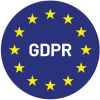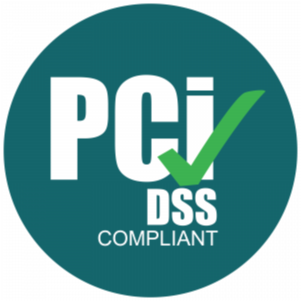What is customer dissatisfaction?
If you’ve never been an unhappy customer, count yourself lucky. Customer dissatisfaction, sadly, is t’s brand buyers experiencing disruption of their customer experience (CX) via physical, cognitive (i.e., thought-induced), or emotional discomfort. In other words, your value proposition failed to meet customers’ expectations, thus creating a disconnect and dissatisfaction.
NPS insights into dissatisfaction
Want to avoid customer dissatisfaction? Who doesn’t! But how? We all know that we need to measure what matters, and NPS can be a helpful indicator in identifying and diving deep into customer dissatisfaction. NPS (Net Promoter Score) describes a transactional or periodic survey method around a single question: You want to know if your customers would or wouldn’t recommend your brand, its features, or services to a close friend or family. The response patterns on a 0-10 scale tell us a lot:
- Respondents that reply “unlikely to” (0-6) signify severe customer dissatisfaction, classifying them as “brand detractors.”
- On the other hand, respondents willing to recommend your brand without qualification (9-10) are satisfied customers, otherwise known as “brand promoters,” “advocates,” or “ambassadors.”
Knowing what type of customer you prefer to see emerging doesn’t take much thought. Savvy businesses conduct serial NPS surveys close to events or promotions winding up or as routine periodic checks to measure emotional temperature in the customer base. That’s how big a deal customer dissatisfaction is.
Consider the complexity of moving in and out of brand services, distribution, usage, loyalty programs, website or app page browsing, and social media navigation that a typical customer journey faces. A CX can instantly derail if the dynamics in a dizzying zigzag pattern between online and offline touchpoints obstruct progress.
In short, it can be severely stressful when stakeholders see detractors popping up unexpectedly in NPS and other survey results. Read on for a comprehensive answer on securing peace of mind with better CX strategies.
Why ignoring customer dissatisfaction costs you revenue
Reliable third-party reports reveal that unhappy customers severely threaten your profitability. How?
- They create churn – a frustrating fracture in the business where an unexpectedly high percentage of long-term brand loyalists jump ship, and their repeat buying you took for granted disappears.
- Brand detractors (described above) fuel the churn mill, creating an urgent need for businesses to replace those who have exited.
- Those on the worst end of this trend can see up to 25 percent of their customers going through the exit styles annually.
- The Great Resignation in 2021 reflected a 50% churn across the economy from restaurants to dental practices, leaving stakeholders scrambling to fill employee gaps for the next three years.
- Here’s the rub: Customer acquisition costs, compared to overheads incurred maintaining loyalty, are five hundred to two thousand five hundred percent higher (according to a Harvard Review.)
The net result of excessive churn is a big hit to the bottom line as staff replacement costs escalate and loyalty turnover (i.e., revenue) slows simultaneously.
The top causes of customer dissatisfaction
Many stakeholders believe it takes a lot for this ROI deterioration to occur. They should adjust their thinking in light of reliable statistics, which show:
- Approximately 32% of US consumers and 49% in Latin America break their brand bonds after experiencing a single disappointing touchpoint.
- When asked why, 23.5% cite poor customer service, such as long wait times and unempathetic agents.
- According to HubSpot,
- 48% of customers point to a lack of customization as a turnoff. This is unsurprising, considering that 80% of customers expect personalized interactions.
- 62% say they’ve become disenchanted with the brand culture.
The other side of the coin: Customer Satisfaction
You have to go the extra mile to create customer satisfaction. According to recent verified statistics:
- Don’t assume that first-time buyers are in the fold and ready to buy again – only 27% come back.
- Nearly 50% of second-timers will graduate to a third purchase, and 38% won’t return a fourth time.
However, once regular repeat customers successfully enter the loyalty ranks (i.e., five buys or more), the best (10%) spend 2X more than the average customer and transact more often. A startling statistic is that a 2% customer retention jump = a 10% cost reduction.
The dissatisfaction ripple effect
According to Amazon chairman Jeff Bezos, an unhappy customer can create market chaos. He highlights that group chats have disenfranchised hundreds, even thousands of customers, as bad word-of-mouth spreads on the internet.
- Plenty of research supports this insight, with one study showing that a single bad review on the first page can reduce purchase intent by around 42%.
- A step worse than a verbosely complaining customer is one who leaves without saying anything – a silent category that’s by far the majority (96%). Why? Approximately 91% steadfastly won’t give your brand a second chance and you’ll never understand what created the rush for the exits.
- Another undesirable side-effect is demoralized staff losing performance bonuses and sitting on their hands as turnover slows.
So, what’s your overriding goal based on all this input? Discover and apply the best strategies for preventing customer dissatisfaction. If you want to find out what they are, read on.
How to handle different types of dissatisfied customers
1. Angry Customers
Several high-emotion indicators give you a chance to react positively. For example:
- Anger signals in review content
- Raised voices during call center interactions
- Customers frustratingly cutting calls mid-sentence
Angry reactions are the opposite of the “silent treatment” most customers choose (described above). Indeed, their noise provides “bread and butter” material for trained support agents. The emphasis here is on “trained” because team members who are unready or psychologically ill-equipped to deal with irate buyers will make things significantly worse.
Many business support divisions exist specifically to address customer pain points. Agents in these units should know what’s coming and be ready to resolve all issues, sensing when to escalate complaints to more senior or specialized team members. You can pick up many excellent customer satisfaction tips for engaging problem customers in B2C and B2B environments.
- Rote or insincere responses are out; feel customers’ frustration and express empathetic comments that resonate as genuine.
- Stay with the problem and resist the temptation to pass the buck, an action that invariably fuels the fire.
- Commit to finding a solution before moving the customer to another post for completion.
- Apologize or lend a sympathetic ear to cool heated emotions, turning a high-probability churn driver into loyalty consolidation.
2. Hidden Dissatisfiers: Identifying Frustrations
You may have noticed the survey momentum hitting you from all sides following various brands and company interactions. Support agents always remind you to comment positively in a short survey that inevitably follows a phone, text, or email interaction.
As mentioned above, Net Promoter Score (NPS) as a go-to option for measuring customer satisfaction. It fits the same category as CSAT and Customer Effort Score (CES) studies. Sogolytics will help you establish an ongoing feedback program to uncover disruptive touch points and change concealed customer unhappiness to one you can see and address. How does the company do this?
- Many of its surveys are short one-question formats designed to attach a quantitative KPI metric to customer satisfaction or dissatisfaction. However, it leaves you guessing why demoter responders wouldn’t recommend your brand or why promoters love it.
- Here’s the solution: Ask the surveyed buyer why they are a demoter, passive, or promoter. In other words:
- Seek qualitative data to “add meat to the bone,” giving yourself insight into customer motivations.
- It’s a robust way to evoke emotions that would remain inaccessible while fueling the churn mill.
- Data analytics software is your ticket to analyzing and rating the significance of qualitative information.
4 proven strategies to prevent customer dissatisfaction
1: Build a highly personalized customer-first culture.
Henry Ford famously declared in a 1909 sales meeting, “Any customer can have a car painted any color that he wants so long as it is black.” Anyone who takes that view in 2025 will be dead in the water!
Why? Market segmentation evolved into sophisticated behavioral and psychographic versions and, lately, has transitioned into micro-segmentation initiatives where marketers prefer to aim at tiny groups with highly relevant brand propositions. The idea is to:
- Be extraordinarily personalized, customized, and tailored around the members’ pain points, making the chances of acquiring a sizable percentage of the small population extremely high.
- Take the opposite approach of targeting a massive marketplace hundreds or thousands of times bigger than the described micro-sectors with a more generalized, shotgun approach, hoping to excite a sliver of a broad audience.
The micro-segmentation theme only succeeds when you sell your customers how they want to buy, which is often significantly different from how you prefer to sell.
Modern customers want you to communicate virtually through omnichannel devices, accessing their social media using audio and video channels with engaging content. They’re look for and respond to:
- Meaningful differentiation, high-level personalization, and evidence of sustainability-consciousness.
- Defined influencers for guidance and aspiration groups.
In short, the above are must-knows for any savvy marketing team to compete in intensely competitive environments. You must bend over backward to deliver a CX your customers prefer to anything else available.
2: Leverage real-time feedback tools.
These options have been covered above, including the benefits of NPS, CSAT, and CES surveys offered by companies like Sogolytics to connect to customers’ needs and expectations. Minimizing or erasing touchpoints that create customers’ frustrations and anger eruptions (e.g., untrained customer support, late deliveries, false claims, impersonal interactions, etc.) is crucial.
With those out of the way, you can install the features your customers tell you are engaging, such as:
- Buying ingredients only from sustainable farms.
- Providing contactless payment systems.
- Offering AI-powered self-service facilities.
- Delivering meaningful loyalty point rewards.
These innovations don’t just appear out of thin air. Your feedback streaming through an ML and AI-enhanced data analytic framework converts buried vital raw data like polishers turn rough diamonds into fine jewelry. It gives you the power to create unsurpassed customer satisfaction.
3: Don’t ignore sustainability.
Millennials, Gen Zs, and even Baby Boomers are into climate control and sustainability. Here are some thought-provoking insights:
- 88% of Gen Z respondents in the study admitted they distrusted brands’ ESG (environmental, social, governance) claims.
- 40% of online green claims are untrue.
- Wikipedia agrees that every business hoping to benefit from sustainability treads a sensitive path through several potential disruptors.
While these may appear to be strategy alarm bells, consider the following from reliable third-party studies:
- Sustainable products sold 270% more successfully than those not, benefiting the public companies going this route with 18% higher ROIs. The reasons why emerged as follows:
- 92% of buyers trust green-centric brands.
- 55% of all consumers and 73% of Millennials are willing to pay higher prices for authentic green brands.
- The ESG theme aligns with 25% more customer retention, showing that 88% of consumers see proven ESG as a highly favorable loyalty attraction.
- Corporate America credits sustainability as directly generating 20% revenue growth.
- Between 73 and 76% of American consumers expect their brands to actively contribute to climate change causes and are likely to churn at the first sign they’re not.
- 85% of global consumers reflect more sustainability in their purchasing decisions than in 2020.
In light of these insights, greenwashing (claiming sustainability on flimsy evidence) creates severe customer dissatisfaction, whereas aligning yourself with ESG best-industry standards will achieve fast and significant market traction.
4: Invest in self-service options.
Live agent connection over the years has created significant customer churn on the back of dissatisfaction with support department incompetence, impatience, rudeness, and fobbing callers off to other team members without resolutions.
Unfortunately, in many instances, self-service software created unique pain points linked to inadequate technology glitches and lack of sophistication.
Whether you rely on partners to make recommendations or test and see for yourself, it’s important to move quickly to meet new client demands that indicate:
- 86% of customers in many third-party studies prefer using self-service tools as long as the issues are not too complicated or require emotional support.
- 67% in some studies regard self-service as the go-to option when trying to solve a pain point.
- 88% of respondents in one study expect their brands to offer self-service support portals.
With professional consultants in your corner, self-service accelerates speed, convenience, and efficiency.
Essential “unhappy customer” metrics to track
Several Sogolytics articles cover NPS and CSAT score calculations (see the footnote below). Both provide crucial metrics you should monitor and compare to industry yardsticks.
Two other reflective KPIs are:
1. The DSAT Score – The percentage of dissatisfied customers in any survey. Examples are the percentage of:
- Detractors in your NPS survey
- Dissatisfied + Very dissatisfied customers in a CSAT survey.
2. The Churn Rate measured as follows:
STEP 1: Calculate {Customers at the end of the period} minus {New customers during the period} = A.
STEP 2: Count customers at the beginning of the period = B.
STEP 3: Calculate {(B minus A)/B} x 100.
Two customer dissatisfaction case studies
1. The Comcast brand image debacle: When you think you’ve seen it all, a customer dissatisfaction story pops up to show you haven’t. Comcast’s was a slight wind swirl that transformed into a hurricane. In 2015, a company sales agent changed a customer’s name from Ricardo to “A**hole” in the records. Why? Ricardo decided not to renew the contract.
All the company’s apologies and gift gestures couldn’t stop the story from going viral, smashing Comcast’s reputation to the point it received the dubious distinction of “the most hated company in America” in 2017.
The Comcast lesson: When customer empathy leaves the stage, combined with poor agent selection and training, you tread a precarious CX path that can implode your strategies in the blink of an eye.
2. Sweet Fish Media (a B2B podcasting agency) stated its mission was helping clients improve their customers’ or prospects’ experiences and journeys.
The company picked up from its data metrics that the churn rate was accelerating to a monthly 15% of previously retained revenue customers, described as a “big hole at the bottom of their bucket” by its sales director.
The stakeholders reacted by soliciting intensive customer feedback via organized quarterly podcast reviews to revise its approach to meet industry best practices.
The Case study results: The exercise proved incredibly insightful, enabling Sweet Fish to reduce the churn rate to three percent within a year – an 80% reduction.
The Sweet Fish Media lesson: Listen to your customers and sell them the way they want to be sold.
Conclusion
The Sogolytics team’s expertise and CRM resources are at the cutting edge of solutions to customer dissatisfaction and creating CXs that engage and foster brand traction in the marketplace. Our NPS, CSAT, and CES software programs waste no time in uncovering churn and related issues wherever they impact your strategies.
It doesn’t end there: Once detected, Sogolytics can help identify and tackle detractor drivers, turning them and NPS passives into brand ambassadors. We understand the devastating impact of dissatisfaction, so we focus on the corner-to-corner coverage of AI-powered tools that go to the crux of the problems for sustainable customer experiences that bolster your ROI instead of weighing it down.
Contact us today for a comprehensive overview of your customer satisfaction strategy needs for the solutions you expect and deserve.
FAQs
1. What is the true meaning of customer dissatisfaction?
A: Brand buyers who experience disruption in their customer experience (CX) after interacting with one or several touchpoints that left them feeling your value proposition failed to meet expectations fall into the dissatisfaction category. People in the latter group express unhappiness connected to physical, cognitive (i.e., thought-induced), or emotional discomfort.
2. How do you handle an angry or dissatisfied customer?
A: Agents and company representatives must:
- Listen carefully to complaining consumers with a “put yourself in their shoes” approach.
- Stay with the problem as long as possible and resist the temptation to pass the buck, which invariably fuels the fire.
- Commit to finding a solution, or at least part of one, before moving the customer to another post for completion.
- Apologize and lend a sympathetic ear to cool heated emotions and turn a high-probability churn driver into loyalty consolidation.
3. What’s the difference between customer dissatisfaction and churn?
A: Customer dissatisfaction arises from severe pain points related to a brand. See the question about dissatisfaction definition above. Churn is the net result of failing to address customer dissatisfaction successfully or ignoring it.
4. How can businesses prevent customer dissatisfaction?
A.
- Build a Customer-First, Highly Personalized Culture
- Leverage Real-Time Feedback Tools.
- Don’t ignore sustainability.
- Invest in Self-Service Options
5. What tools help track and resolve customer dissatisfaction?
A: NPS, CSAT, and CES surveys with their integrated metrics.
6. Why is resolving dissatisfaction critical for customer retention?
A: They’re opposites, which means if one is vibrant and robust, the other isn’t. So, if you want impressive retention, minimize or erase customer dissatisfaction.














